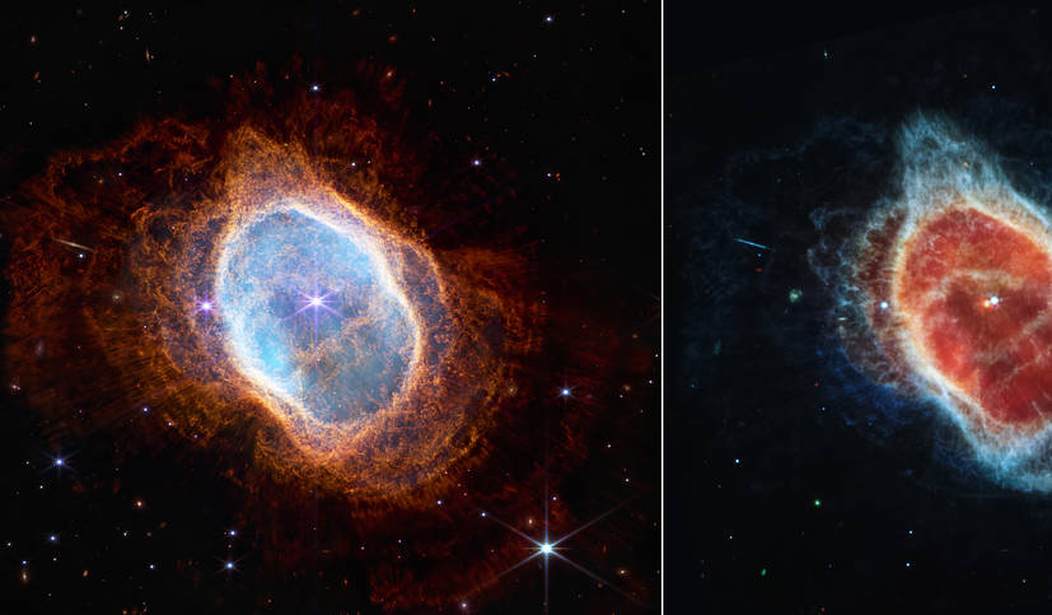The construction and launch of the James Webb Space Telescope (JWST), the successor to the Hubble, has been described as a triumph of ingenuity and indomitable spirit. Director of the Netflix documentary “Unknown: Cosmic Time Machine” Shai Gal describes this “amazing moment” as unprecedented in space exploration, congratulating NASA for sticking with so risky and costly an endeavor and praising the team that made it possible — “it’s easy to love them and admire their spirit,” he says. However, despite the magnitude of their achievement, which as an astronomy buff I readily acknowledge and am grateful for, the documentary raised a number of troubling issues.
For one thing, the conclave of astrophysicists and engineers staring into their screens and solving complex calculations seemed entirely unaware that the great adventure they’d embarked upon had been on the verge of swerving into sexual politics rather than objective science. Certainly, the filmographer also seemed in the dark or preferred to keep it that way. Shai Gal says nothing about the potential travesty. If the feminist organization Particles for Justice had had its way, James Webb would have been cast into the outer darkness of space like David Bowie’s Major Tom on the very shaky grounds that the former NASA chief administrator had been a compliant homophobe.
As Janice Fiamengo wrote for The Pipeline at the time of the controversy, the feminists’ choice “to replace Webb is almost laughably formulaic. They advocate the telescope’s renaming after an escaped 19th-century slave woman and abolitionist, Harriet Tubman. It is not known that Tubman ever gave a thought to astronomical research, but the activists claim that she ‘almost certainly used the North Star […] to navigate her way to freedom.’” Another nominal candidate was Sally Ride who, according to the Particles petitionaries, was the “first American woman and member of the LGBT community in space.”
Rather than peering solely into the origins of the cosmos, the NASA team would also have been peering into the origins of the feminist universe. The Big Bang of feminism exploding into the public domain would be the major accomplishment of human imagination, flair, and deep-delve exploration, of which the revelation of the infancy of the cosmos would have remained a distant second.
Another distressing element the documentary made visibly clear but did not dwell on was the fact that most of the scientists were duly masked. Obviously, they had not conducted a focused study of the COVID-19 hysteria, the nature of the virion, the pandemic mandates, and obviously not of the ostensible efficacy of masks, which is to say, on the functional uselessness of these rag-like fabrics, as any reasonable layman with a modicum of common sense and a few hours of independent research would have known. Perhaps they had no choice, working as they did for a government organization.
The “failure is not an option” mantra that runs through the film might be better phrased as “failure to comply is not an option.” Or perhaps they were aware that the masking phenomenon was nothing but a scam since the scientists plainly did not respect the social-distancing rule, crammed cheek-by-jowl at their workstations. Or perhaps they thought they might get away with only partial acquiescence.
One is left with the impression that, with only a handful of luminous exceptions, the scientific community is not all that it is made out to be. As Nobel laureate John Clauser laments, referring to the hoax of “Climate Change,” the world is “totally awash in pseudoscience.” But it is worse than that. Even scientists who are good at their jobs, who have done stellar research, and who are at the forefront of their fields, have fecklessly succumbed to the cortical weed of the woke cultural syndrome and especially to the intimidating ravages of feminism.
As Fiamengo reminds us, it was a gang of feminists and their male enablers who tried to prevent the building of the world’s largest telescope on Hawaii’s Mauna Kea and who brought about the firing of renowned particle physicist Alessandro Strumia from CERN for having objected to the targeted hiring of women into STEM at the expense of more competent male scientists. Examples abound. These are the outliers.
As noted, the trouble is that far too many scientists bow, apologize, and submit to the “social justice” orthodoxy, often becoming card-carrying members of an ideological conspiracy without a shred of empirical evidence, conceding their integrity to the enemies of truth. This is not science. It is one of three things: corruption (“We’re talking about trillions of dollars,” Clauser says), cowardice, or stupefaction.
“Fealty to the principles of diversity,” Fiamengo continues, “especially to the dogma that women and people of color should always be hired and promoted over white men, is now an accepted requirement in Astronomy departments across the Western world. Denunciations of misogyny, heterosexism, and anti-blackness have become the primary preoccupations of many astronomy researchers, at least some of whom seem to spend far more time and energy agitating for social justice than studying the heavens.”
It’s a sinister game. With regard to the NASA team mounting the huge observatory into space, cowardice and corruption do not appear to be the baleful factors in play, but some form of stupefaction is. The spectacle of these heroes with their beak-like proboscises sharing high fives just looked grotesque.
To make no mention of the feminists’ nearly successful attempt to rename the telescope and purge its eponymous facilitator and to behave as a masked community in lockstep when any honest and scrupulous scientist would have known that the ubiquitous mask, like the entire panoply of COVID enforcements, was nothing less than an orchestrated delusion and a badge of social servitude, having tarnished the unstinting adulation the NASA team has received as a corps of gifted scientific pioneers.
Great scientists, yes, but rather timid and uninspiring people, who must have known about the procedural pitfalls the program faced but chose to keep silent. There is more to truth than meeting a scientific challenge successfully. There are interwoven historical truths and medical truths that also demand an open and inquiring mind and that need to be recognized and communicated if the Unknown is to become known.
As it is, the documentary leaves out significant aspects of a total situation in order to create an exhilarating story. To argue or to assume that ancillary issues, however crucial, are irrelevant to the chosen narrative gives only a sectional or Bowdlerized view of the bigger picture.
Viewers should know that James Webb was almost unpersoned. They should know that the diversity mavens nearly infiltrated the project, as they have others. The Cosmic Time Machine might have become a stopped clock. They should see that a company of eminent scientists obediently wearing masks calls their prestigious status into question. The success of the mission despite not only the technical but also the social and ideological obstacles in its path is the real story. Kudos to Netflix for an uplifting production and to NASA for a technical triumph, but I’d hoped for something more, something closer to the complete package.
In any event, for an assembly of some of the world’s presumably most brilliant men and women, the level of incuriosity, historical blindness, conventional thinking, surrender to bureaucratic authority, and flaccid acceptance of media disinformation was truly staggering and equally disheartening. One expects better of our Mensa paragons. They were very good at putting a telescope into space and gazing back into origins, but when it came to seeing clearly into the present, into the problematic world they actually live in, and even into the specific history of their project, they were, so to speak, just staring blankly into space.










Join the conversation as a VIP Member